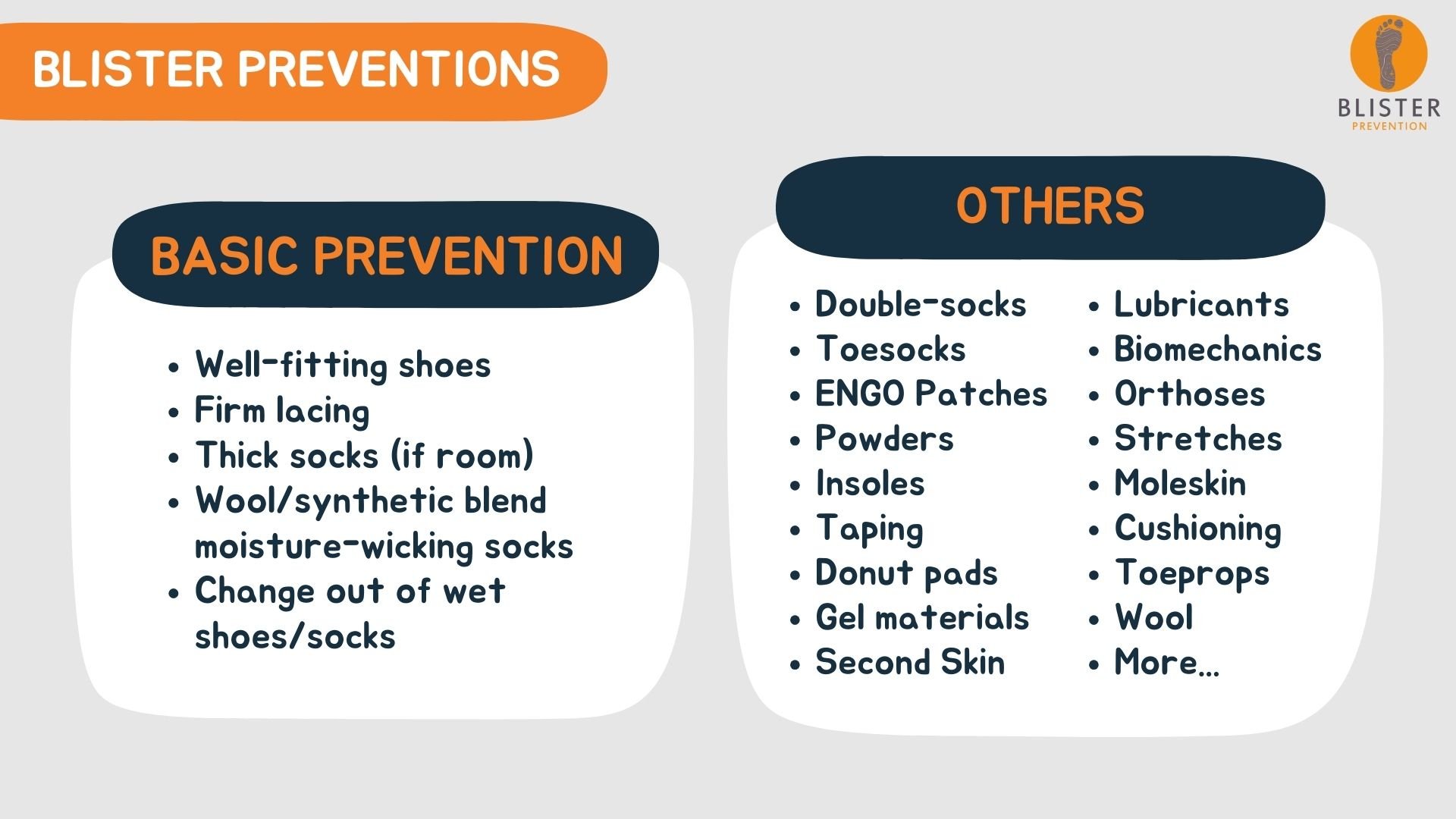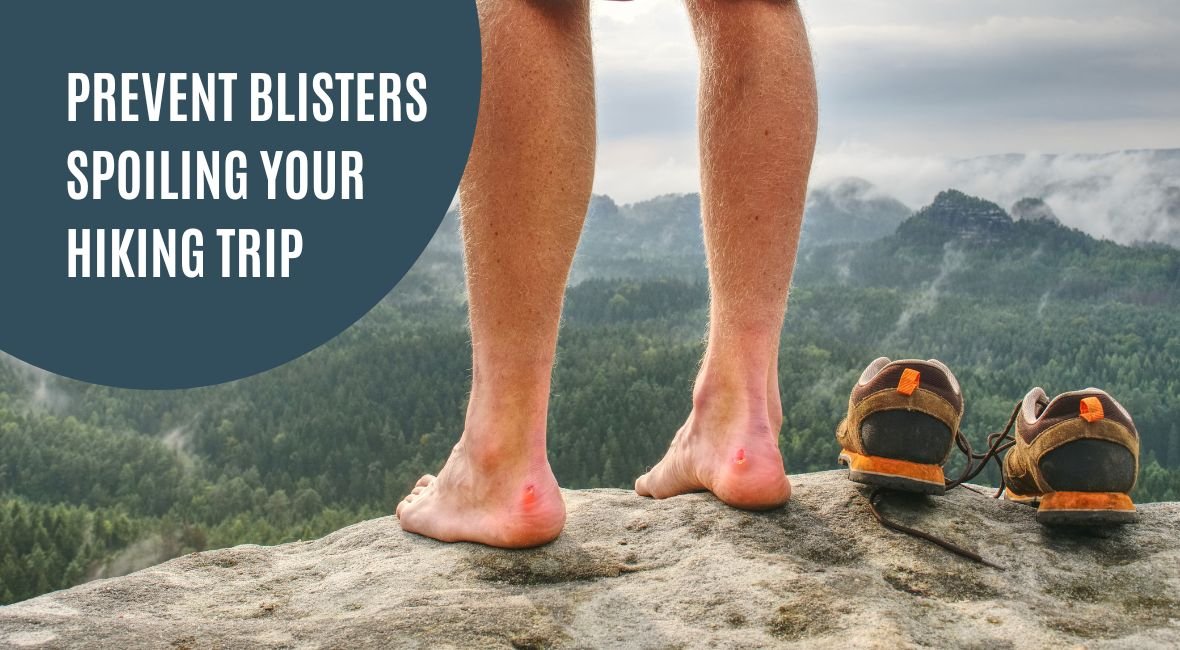To prevent blisters when hiking, wear properly fitted moisture-wicking socks and well-fitting footwear. Hiking is a wonderful way to connect with nature and stay active, but the joy of the experience can quickly be dampened by painful blisters.
Blisters are caused by repeated friction and pressure on the skin, often exacerbated by ill-fitting footwear or moisture buildup. However, with a few simple preventive measures, you can minimize the risk of developing blisters and enjoy your hiking adventures to the fullest.
We will explore practical tips and strategies to help you prevent blisters while out on the trails. These simple yet effective techniques can make a world of difference in your hiking experience, allowing you to focus on the beauty of the great outdoors rather than the discomfort of blisters.


Credit: www.amazon.com
Choosing The Right Footwear
To prevent blisters when hiking, it’s crucial to choose the right footwear. Look for shoes that fit well, provide adequate support, and are made of breathable materials. Opt for moisture-wicking socks and consider using blister prevention products like moleskin or blister pads to minimize friction and discomfort.
Wearing proper footwear is essential for preventing blisters during hikes.Proper Fit
- Ensure your shoes fit well without being too tight or too loose.
- Properly fitting shoes reduce friction and rubbing that can lead to blisters.
- Check for enough toe room to prevent cramped toes during long hikes.
Moisture-wicking Materials
- Choose shoes made with moisture-wicking materials to keep your feet dry.
- Moisture-wicking materials help prevent blisters caused by dampness and sweat.
- Look for breathable shoes that allow air circulation to minimize moisture buildup.

Credit: www.thehiking.club
Socks Matter
Discover the importance of proper hiking socks for avoiding blisters. Learn tips like choosing moisture-wicking fabrics and ensuring a proper fit to keep your feet comfortable and blister-free on your outdoor adventures. Your hiking experience will greatly improve with these simple yet effective strategies.
Socks play a crucial role in preventing blisters when hiking. Choosing the right socks can make a significant difference in your hiking experience. Good hiking socks provide cushioning, wick moisture away from the skin, and reduce friction.Material Selection
Select moisture-wicking and breathable materials such as merino wool or synthetic blends. Avoid cotton as it retains moisture, increasing the likelihood of blisters.Double Layering
Consider double layering your socks for added protection. The inner layer should be a thin, moisture-wicking sock, while the outer layer provides cushioning and reduces friction against your shoe. Remember, the right socks can make a significant difference in preventing blisters while hiking!Foot Care Techniques
Foot care techniques are vital for preventing blisters while hiking. Whether it’s a leisurely stroll or an intense trek, taking care of your feet is essential to ensure a comfortable and enjoyable outdoor experience.
Prevent Friction
To prevent friction and reduce the risk of blisters, wearing moisture-wicking socks can help keep your feet dry. Lubricating high-friction areas with anti-blister balm or petroleum jelly can also minimize rubbing and irritation.
Proper Hydration
Proper hydration is crucial for maintaining the integrity of your skin during hiking. Drink plenty of water to keep your body and skin hydrated, reducing the likelihood of friction and blisters.

Credit: azengear.com
Break-in Your Footwear
When it comes to hiking, one of the biggest issues that hikers face is blisters on their feet. Blisters can be painful and can quickly ruin an otherwise enjoyable hike. However, there are several steps you can take to prevent blisters, and one of the most important is to break-in your footwear properly. By gradually using your hiking shoes or boots and testing them on short hikes, you can ensure that they fit correctly and won’t cause unnecessary friction that leads to blisters.
Gradual Usage
Hiking shoes and boots can be stiff and uncomfortable when they are brand new, which is why it is important to break them in before embarking on a long hike. Gradual usage is the key to achieving this. Start by wearing your new footwear around the house for short periods of time, gradually increasing the duration as your feet adjust to the fit and feel of the shoes. This will help soften the materials and allow them to mold to the shape of your feet, reducing the likelihood of blisters forming.
Testing On Short Hikes
Once you have worn your hiking footwear around the house for several hours without discomfort, it’s time to take them out on short hikes. Testing your shoes or boots on shorter trails allows you to assess their performance and identify any areas that may cause friction or discomfort. Begin with easier terrains and gradually increase the intensity of your hikes as you become more confident in the fit of your footwear.
During these short hikes, pay close attention to any areas on your feet that feel hot or irritated. These are potential blister-prone spots. If you notice any discomfort, readjust your socks or laces to alleviate pressure points or consider adding extra padding or moleskin to protect these sensitive areas.
In addition to testing your footwear, pay attention to the overall comfort of your hiking socks. Investing in moisture-wicking and cushioned socks can further reduce the risk of blisters by keeping your feet dry and providing extra padding.
Handling Hotspots
When it comes to preventing blisters while hiking, one important aspect to consider is handling hotspots. Hotspots are those areas on your feet that feel warm or irritated, indicating a potential blister formation. Identifying hotspots and taking immediate action can help protect your feet and make your hiking experience much more enjoyable. In this section, we will discuss how to identify hotspots and use moleskin or tape to prevent blisters.
Identifying Hotspots
Identifying hotspots is crucial for preventing blisters. These sensitive areas on your feet may feel warm or painful to the touch, signaling the development of a blister. It’s important to pay close attention to any discomfort and address it as soon as possible. To identify hotspots, follow these steps:
- Regularly check your feet during breaks to detect any areas of tenderness or irritation.
- Run your fingers gently over different parts of your feet to feel for any warmth or pain.
- Look out for redness or the formation of small, raised areas on the skin.
- Take note of any specific areas that consistently cause discomfort or rubbing.
Using Moleskin Or Tape
Moleskin and tape are essential items to have in your hiking gear to prevent blisters. These materials can provide a protective barrier and reduce friction, minimizing the risk of blisters. Follow these steps to effectively use moleskin or tape:
- Cut a piece of moleskin or tape slightly larger than the size of the hotspot.
- Clean and dry the affected area on your foot.
- If the skin around the hotspot is intact, apply the moleskin or tape directly to the area, ensuring it covers both the hotspot and the surrounding skin.
- If the hotspot has already developed into a blister, ensure you apply padding over the blister first and then use the moleskin or tape to secure it in place.
- Smooth out any wrinkles or loose edges of the moleskin or tape to prevent further rubbing or irritation.
- Reapply the moleskin or tape as necessary, especially if it becomes loose or wet due to perspiration or water.
By promptly addressing hotspots and using moleskin or tape, you can significantly reduce the chances of developing painful blisters while hiking. Remember to pay attention to your feet throughout your hike and take the necessary precautions to keep them blister-free.
Frequently Asked Questions On Tips On How To Prevent Blisters When Hiking
How Can I Prevent Blisters When Hiking?
To prevent blisters when hiking, make sure to wear properly fitted socks and shoes. Keep your feet dry by using moisture-wicking socks or applying talcum powder. Break in your shoes before hiking long distances and use blister prevention products, such as moleskin or blister patches, on areas prone to blisters.
What Are The Best Socks For Preventing Blisters When Hiking?
Look for socks specifically designed for hiking that are made of moisture-wicking materials. Merino wool or synthetic blends are good options as they help keep your feet dry. Seamless socks and socks with cushioning in high-pressure areas, like the heels and toes, can also help prevent blisters when hiking.
How Should I Care For My Feet After Hiking To Prevent Blisters?
After hiking, make sure to wash and thoroughly dry your feet. Apply moisturizer to keep your skin hydrated. Inspect your feet for any redness or hotspots, and address them promptly. Keep your toenails trimmed to avoid pressure points. Finally, give your feet enough rest between hikes to allow them to recover.
Conclusion
Taking proactive measures can help prevent blisters while hiking. By choosing proper footwear, wearing moisture-wicking socks, and using friction-reducing products, hikers can minimize the risk of developing blisters. Prioritizing foot care and paying attention to hot spots during hikes can make all the difference in enjoying a blister-free outdoor adventure.